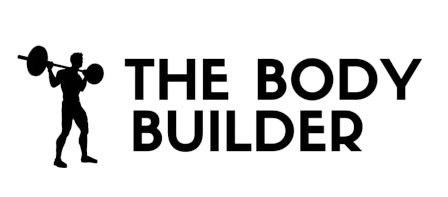Pull-up
The pull-up is an incredibly versatile exercise that helps build strength and muscle in the upper back, biceps, and core. It is frequently used to measure strength and fitness levels in military or tactical fitness tests, due to its ability to assess 'relative strength' - the ratio of strength to bodyweight.
In addition to its use in physical tests, the pull-up is also a great exercise for anyone looking to improve their upper body strength and muscle mass. It can be performed with a variety of grips, from wide to narrow, which allows for a greater range of motion and increased difficulty. Furthermore, it can be performed with added weight for those looking to challenge their strength even further.
The pull-up is an incredibly effective exercise for targeting the upper body, core, and biceps. It is incredibly versatile and can be adjusted to suit any fitness level, from beginner to advanced. It is a great way to measure relative strength and can be used as part of a comprehensive fitness program or as a standalone exercise.
Type:
Strength
Muscles Used:
Lats
Level:
Beginner
Equipment:
Body Only
Benefits Of This Exercise
- The pull-up is an incredibly effective exercise for targeting the upper body, core, and biceps.
- It is incredibly versatile and can be adjusted to suit any fitness level, from beginner to advanced.
- It is a great way to measure relative strength and can be used as part of a comprehensive fitness program or as a standalone exercise.
- Strengthens the muscles of the lats (latissimus dorsi), biceps, upper back, core, and grip.
- Requires no equipment other than a bar.
- Can build absolute strength for low reps, or strength endurance for higher reps.
- Easy to alter grip style and width to target different muscles or rep ranges.
Step by Step Instructions For Pull-up
- Begin by taking a wide grip on a pull-up bar, hanging freely with your arms extended. This will be your starting position.
- Engage your back muscles and biceps as you pull yourself up by flexing your elbows and adducting the glenohumeral joint. Avoid swinging or using momentum to complete the movement. Aim to get your chin above your hands.
- Pause briefly at the top of the motion, squeezing your back muscles and biceps to maintain tension.
- Slowly and controlled, lower yourself back down to the starting position, fully extending your arms.
- Repeat the movement for the desired number of repetitions.
Warm Up Tips
- Start with a wide grip on the pull-up bar, hanging freely with your arms extended.
- Engage your core and pull yourself up by flexing your elbows and bringing your chin above your hands. Avoid swinging or using momentum.
- Pause at the top of the motion to fully engage your muscles.
- Lower yourself back to the starting position with control.
- Repeat for a few reps to warm up your upper back, biceps, and core.
Pull-up Safety Tips
- Warm up properly before attempting pull-ups to prevent injury. This can include dynamic stretches and a few minutes of light cardio.
- Ensure that the pull-up bar is secure and stable before starting the exercise.
- Start with a grip that is comfortable for you, whether it’s a wide or narrow grip.
- Engage your core muscles throughout the exercise to maintain stability and prevent excessive swinging.
- Avoid using momentum to complete the movement. Focus on using your upper back and biceps to pull yourself up.
- Keep your shoulders down and back to avoid straining the neck and shoulders.
- Do not lock your elbows at the top of the motion. Maintain a slight bend to prevent excessive stress on the joints.
- If you are a beginner, start with assisted pull-ups using a resistance band or a partner to help you. Gradually decrease the assistance as you gain strength.
- Listen to your body and stop if you feel any pain or discomfort. Consult a healthcare professional if necessary.
- After completing the exercise, stretch your upper body muscles to prevent tightness and promote flexibility.
Incorporating Into Other Workouts
One way to incorporate the pull-up exercise into a workout routine is to include it as part of an upper body strength training session. Here is an example of how it can be included:
1. Warm up: Start with a dynamic warm-up routine that includes exercises such as arm circles, shoulder rolls, and wrist stretches.
2. Compound movements: Begin the workout with compound movements that target multiple muscle groups. This can include exercises such as bench press, overhead press, or rows. Perform 3-4 sets of 8-10 reps with a challenging weight.
3. Pull-up progression: After completing the compound movements, move on to the pull-up exercise. Start with a grip style and width that is comfortable for you. Perform 3 sets of as many reps as possible, aiming for at least 6-8 reps per set. If you are unable to perform full pull-ups, you can start with assisted pull-ups using a resistance band or an assisted pull-up machine.
4. Superset with other upper body exercises: To maximize the efficiency of your workout, you can superset the pull-ups with other upper body exercises. For example, you can perform a set of pull-ups followed by a set of push-ups or dumbbell rows. This helps to keep your heart rate elevated and increases the overall intensity of the workout.
5. Core exercises: After completing the pull-up sets, incorporate some core exercises to further strengthen your abdominal muscles. This can include exercises such as planks,

